Geranium or pelargonium has long and firmly occupied many window sills as an unpretentious and beautiful plant. It can be grown at home and in flower beds: the flower looks great anywhere. It is recommended that you read how to care for geraniums at home before buying.
Content
Geranium: general information
Its scientific name is geranium - pelargonium - translated from Greek means "stork" or "crane"... The plant got this unusual name because of the fruit - as long as a bird's beak.
There are more than 400 species of geraniums in the world, which can be found almost all over the world, about 40 species are found in Russia. It is noteworthy that in Germany geranium is called the "stork's nose", and in the USA and England - the crane.
It is a meadow annual or perennial plant that grows up to 60 cm. The leaves are soft, covered with hairs, have finger-lobed or finger-dissected forms. Large flowers have 5 regularly spaced flowers, usually collected in inflorescences. They can be terry and smooth, among the shades there are white, red, purple and blue.
Among the most popular types home geraniums are present:
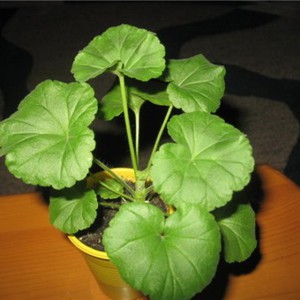 Ampelskaya: has long branches hanging down, so it is better to hang it in a pots;
Ampelskaya: has long branches hanging down, so it is better to hang it in a pots;- Fragrant: it has a strong aroma, which may differ depending on the varieties: it can be lemon, vanilla, wormwood, rose and others;
- Zonal: the double color of flowers is clearly separated from each other;
- Royal, other names for Martha Washington, royal, English, noble or domestic: a dark spot appears as a distinctive feature, which is located on all petals of large flowers;
- Angels: a separate species with a long flowering period and a pleasant aroma;
- Gardening, magnificent, large-rhizome, blood-red: these species belong to garden flower species that have strong developed roots
In addition to "pure" varieties, there are a huge number of hybrids that you can grow yourself. Among domestic species, the name pelargonium is often found. They belong to the same geranium family, but differ in appearance... Despite this, caring for pelargonium at home, as well as for geranium, is almost the same.
How to care for geraniums
Home care for geraniums, photos of which are easy to find, have borne fruit, it is necessary comply with the basic conditions:
- Geranium feels great at room temperature: in summer it can fluctuate in the range of + 20-25 degrees, in winter it should not fall below + 10-14 degrees. Better to choose a place away from drafts.
- But the flower is more capricious to light: the plant can even be left in direct sunlight, without fear of harm, since a lack of light leads to crumbling of leaves and flowers. The only thing that may be required is to turn the pot from time to time so that the plant forms from all sides. In winter, the lack of light is compensated by fluorescent lamps. If there is not enough light, the leaves will begin to fade rapidly.
- The simplest commercial universal soil is suitable for geraniums. You can cook it yourself by mixing 1 part of turf and foliage, one and a half parts of humus and half of sand. Drainage must be placed on the bottom of the pot.
- The flower loves moisture and requires regular and frequent watering. In this case, the water should not stagnate in the pot or fall on the leaves. High humidity is also contraindicated. You can use settled water from the tap, rain and melt moisture are also suitable. In winter, it is required to reduce the frequency of watering in half, since the plant is dormant.
- A transplant is only required if the pot has become small. You should not choose large pots: geranium treats them badly and blooms profusely only in "cramped conditions". The optimal dimensions would be: height 12 cm, diameter 12-15 cm.
- The plant is not demanding for complementary foods and is content with standard mineral fertilizers. They are brought in from March to September twice a month. You can also use specialized geranium fertilizers.
- To form a beautiful appearance, you can occasionally prune the upper and side branches, as well as remove dry leaves and flowers.
- Pelargonium propagation occurs by cuttings at any time of the year.
Correct transplant
 Geranium bad about transplant, and therefore it is better not to change the pots more often 1-2 times a year. The reasons may be the following factors:
Geranium bad about transplant, and therefore it is better not to change the pots more often 1-2 times a year. The reasons may be the following factors:
- The roots became cramped: you can check this by carefully pulling the geranium out of the pot;
- Due to excess moisture, the flower began to wither;
- Despite leaving, geranium does not develop and does not bloom;
- The roots were very bare.
Pelargonium is usually transplanted in the spring, from February to April, but this is not important: you can transplant the plant even in winter, only the bush will take root longer. It is also not recommended to touch a flowering plant: it already spends a lot of energy on flowering and will not accept a new home well. Instead of replanting, you can renew the topsoil, adding fresh soil as needed.
Some gardeners, as additional care, transplant geraniums outside to the flowerbed every spring, and in the fall they "take" it back. This helps to heal the plant itself, and at the same time split roots for propagation.
- It is necessary to prepare all the tools, and treat the pot with a bleach solution if it has already been used previously for another plant. This will avoid the transmission of the disease.
- Drainage is laid out at the bottom of the pot. These can be small stones or foam.
- Geranium is watered to keep the ground moist. Then you need to turn the pot over and carefully remove the plant from it, being careful not to break or damage the roots. You can tap the sides and bottom lightly to separate the soil from the pot.
- The roots are examined, and if rot or signs of disease are found, carefully pruned.
- The flower is lowered into a pot and the empty places are covered with earth, lightly watered, compacted and more soil is added.
- After transplanting, geraniums are removed to a dark place for a week, then transferred to the designated place. After 2 months, you can add top dressing.
In a similar way, the plant is transplanted from the street in the fall before the onset of frost. If necessary, you can make gentle pruning... To do this, shorten all the shoots, leaving about 20 cm. The cut should take a few millimeters from the node. During the winter, geraniums will not be able to give strong enough stems, and therefore pruning will have to be repeated in February-March.
Geranium propagation
Pelargonium can be propagated by seeds and cuttings: the first option is suitable for obtaining new varieties, the second for a new bush. Geranium can also be propagated by rhizomes, but waiting for this you need to have some experience.
Seed propagation
 It is possible to plant pelargonium seeds from the beginning of March, having previously treated the ground with a weak solution of potassium permanganate to protect against diseases. You can use purchased soil by adding sand and humus... Seeds are scattered over a loosened surface and lightly sprinkled with earth on top, then cover the container with a film to create a greenhouse effect and put away for several days in a warm place. When the sprouts are strong enough, they can be planted, after which standard care begins.
It is possible to plant pelargonium seeds from the beginning of March, having previously treated the ground with a weak solution of potassium permanganate to protect against diseases. You can use purchased soil by adding sand and humus... Seeds are scattered over a loosened surface and lightly sprinkled with earth on top, then cover the container with a film to create a greenhouse effect and put away for several days in a warm place. When the sprouts are strong enough, they can be planted, after which standard care begins.
Propagation by cuttings
The best time for propagation by cuttings is spring. A cut off stalk with 3-4 leaves (it is better to cut it off from the top) is placed in water and waited for the roots to grow. After the pelargonium is dried and buried in the ground.
Alarms
If the appearance of a geranium suddenly changes for the worse, for this you need to pay attention:
- With a lack of moisture, the leaves dry out and turn yellow, with an excess, they become lethargic and unnecessarily dull, gray rot appears on the stems;
- If the leaves, especially the lower ones, have begun to fall off, there is a lack of lighting;
- If the plant has stopped blooming, this indicates an overly large pot or lack of dormancy in winter.
Geranium diseases
Like any plant, geraniums even after good care susceptible to pest and disease attacks.
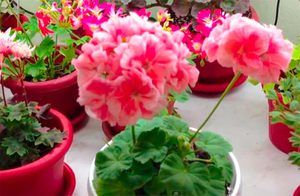 Gray mold or rot: Appears on leaves due to over-watering. It is necessary to stop watering and remove all damaged leaves, then spray the geranium with an antifungal drug.
Gray mold or rot: Appears on leaves due to over-watering. It is necessary to stop watering and remove all damaged leaves, then spray the geranium with an antifungal drug.- Root rot: it affects the root, it is no longer possible to cure the plant.
- Powdery mildew: This is a fungal disease that attacks the leaves, leaving a white coating on them. It occurs due to high humidity and low temperatures. For treatment, use a solution of chemical preparations.
- Blackleg: Often attacks the cuttings and causes them to rot. It is necessary to stop watering and remove the affected cuttings, then treat the plant with an antifungal drug.
- Aphids: Found on the underside of leaves. You can get rid of it by spraying the leaves with poison according to the instructions.
- Whitefly: settles on the lower part of the leaf and feeds on flower juices. To eliminate, remove the affected leaves and spray the geranium with poison.
Output
Geranium is an unpretentious plant that even novice gardeners can handle at home. It does not require special growing conditions and frequent transplantation, easily tolerates direct sunlight and drought... The only thing to remember: geranium has a negative attitude to high humidity and systematic transfusions. In such conditions, she will quickly begin to wither and die.


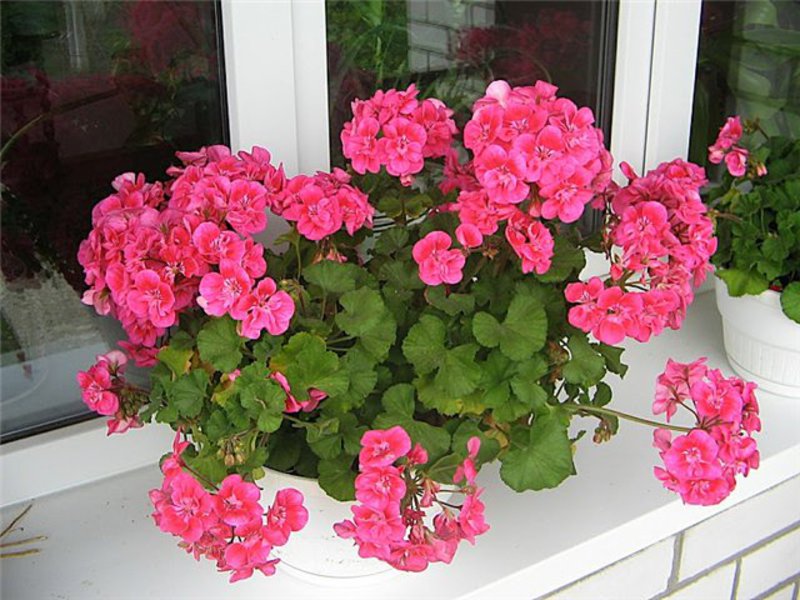
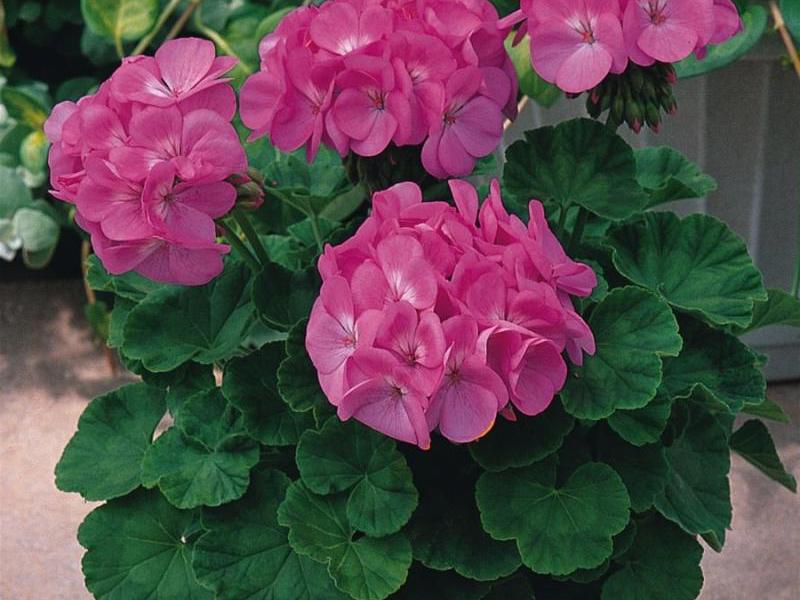

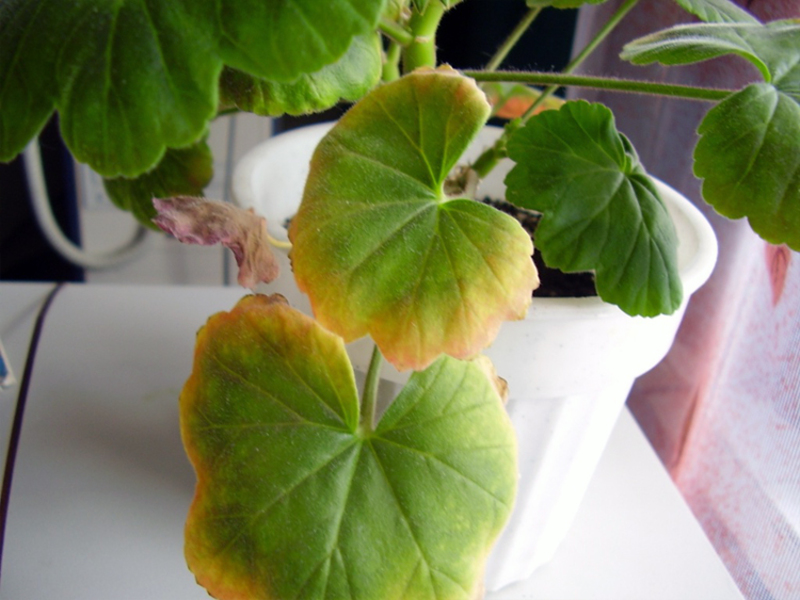
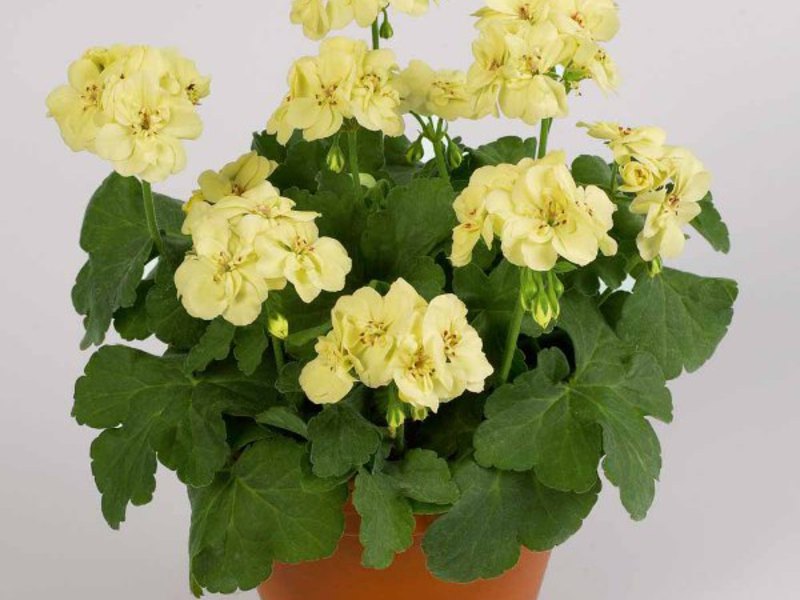
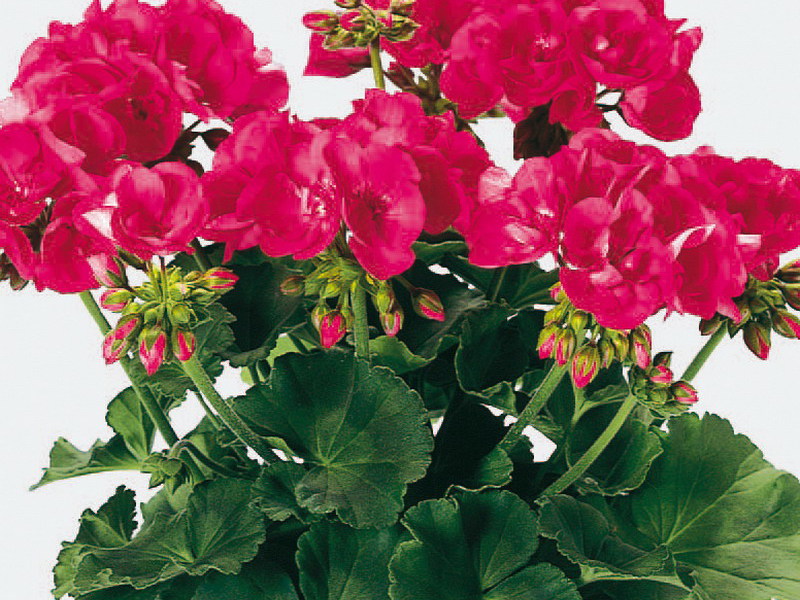
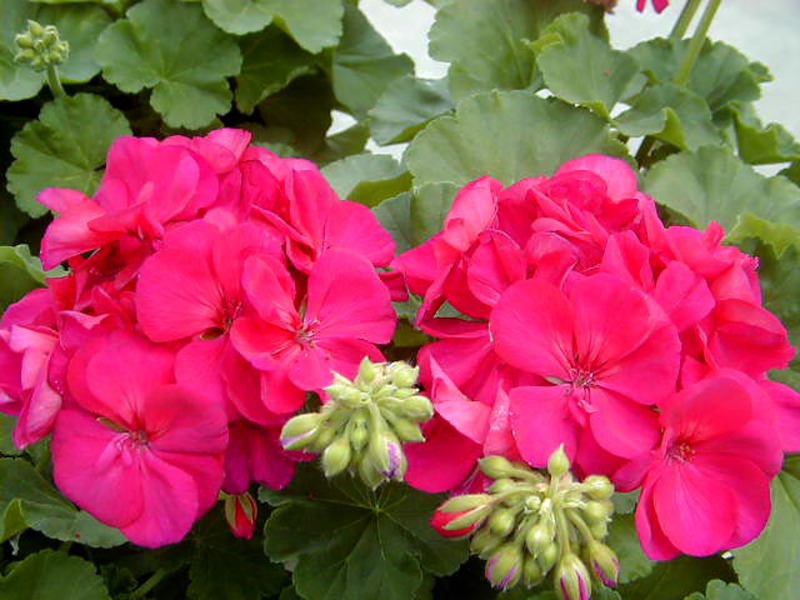

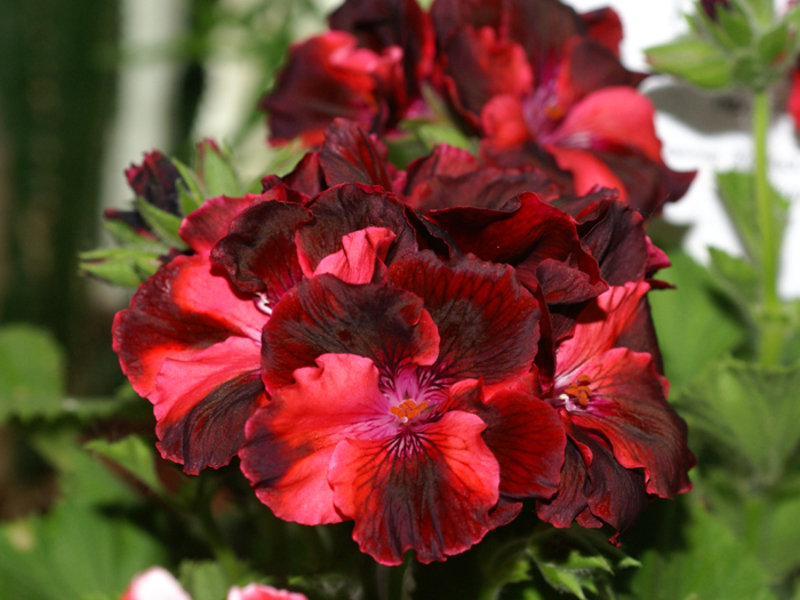
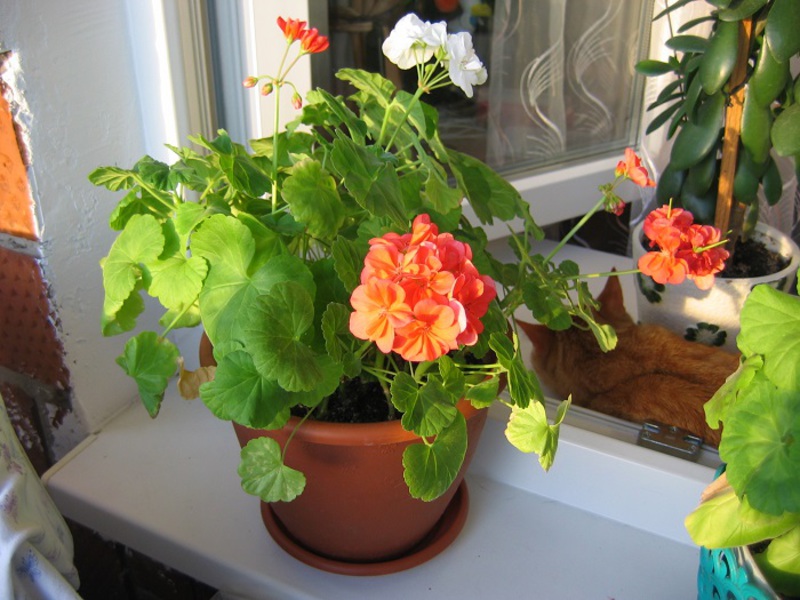
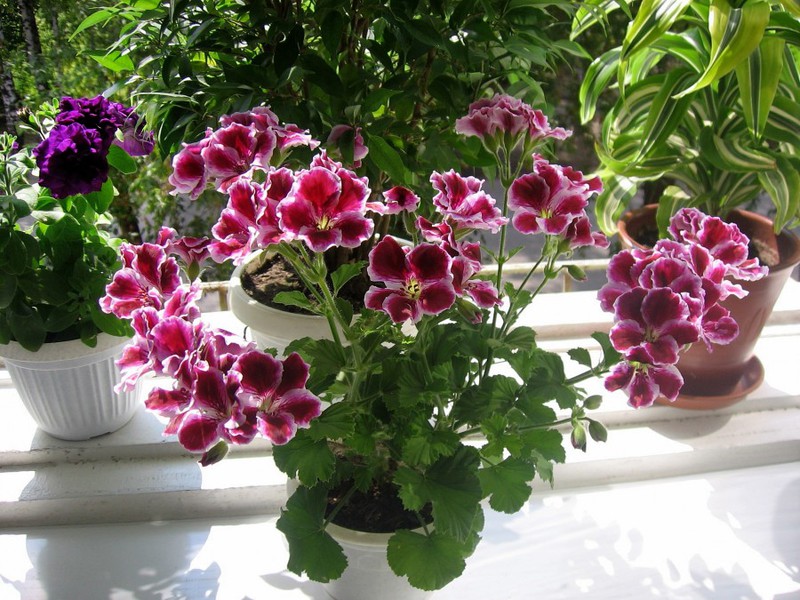
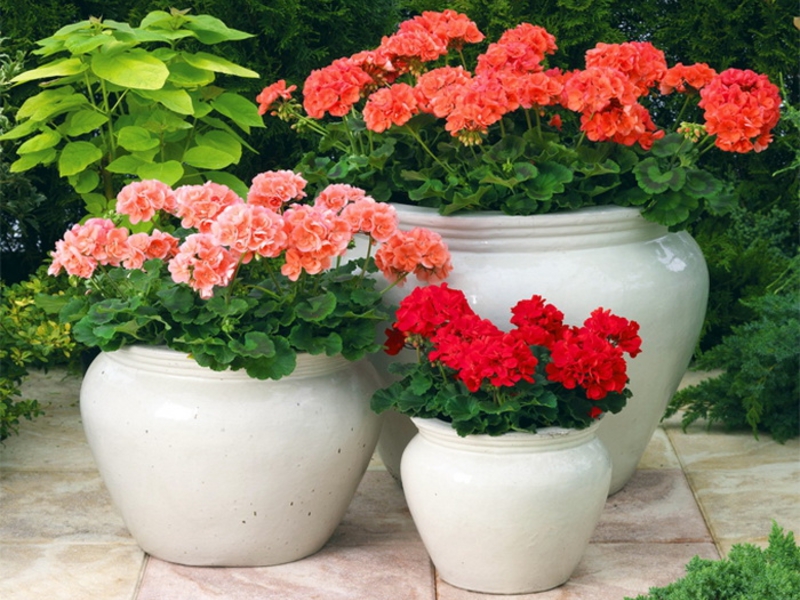
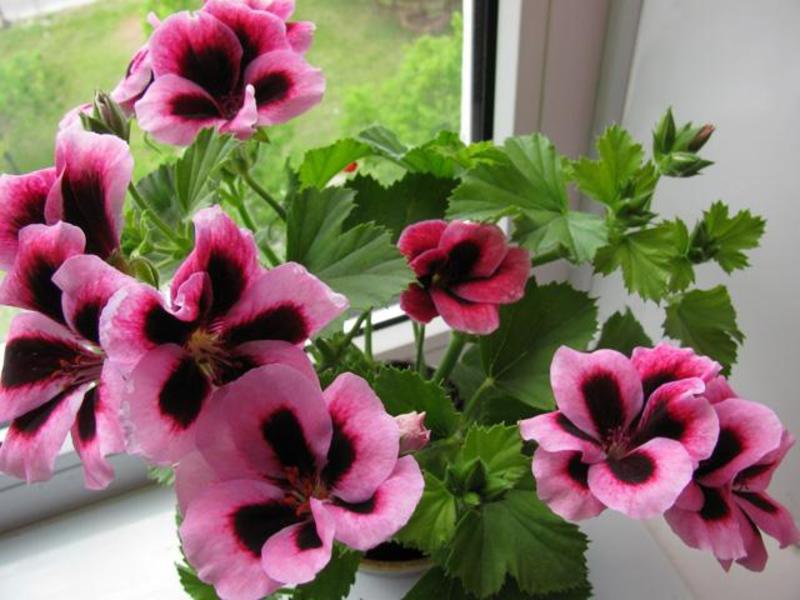



2 comments